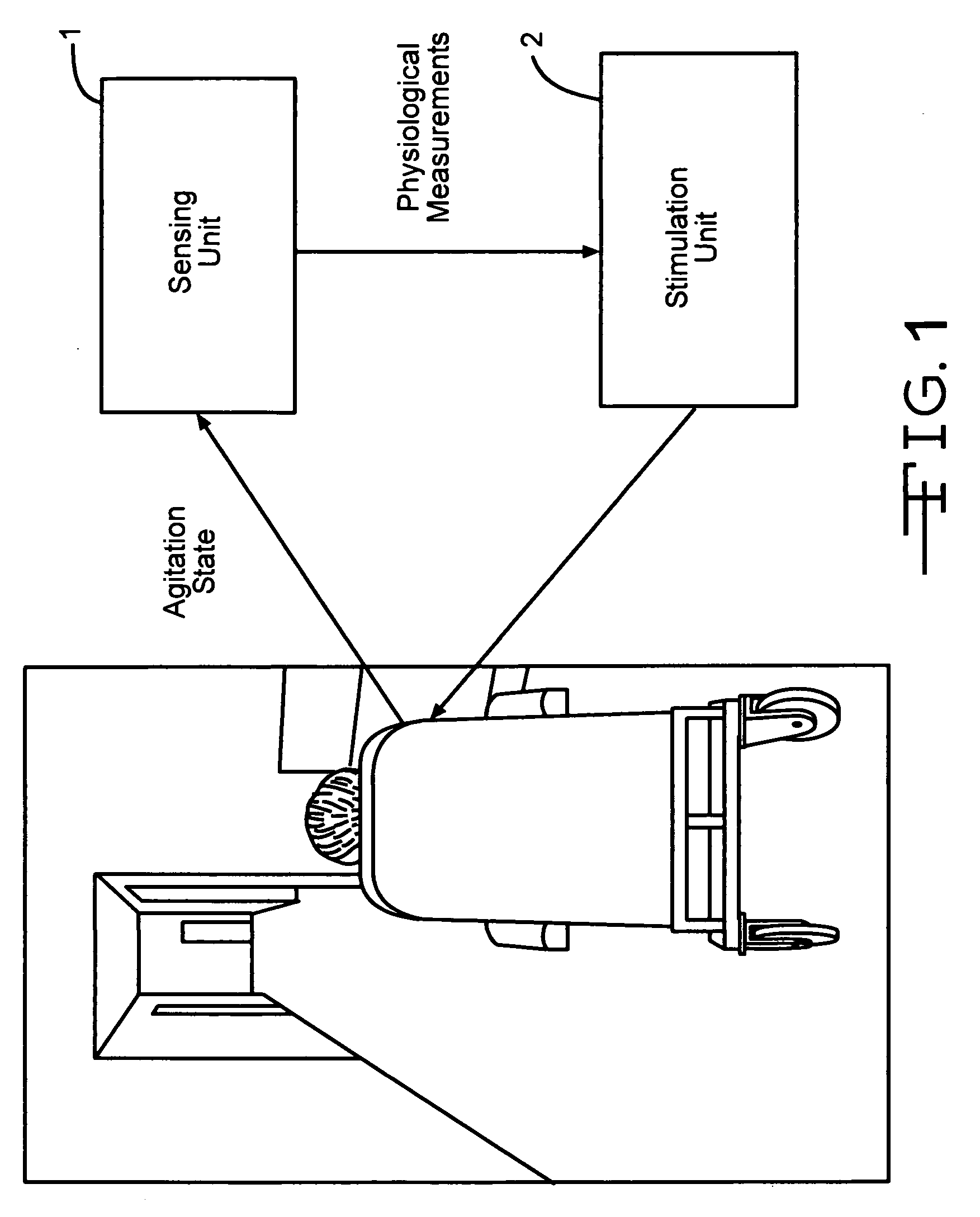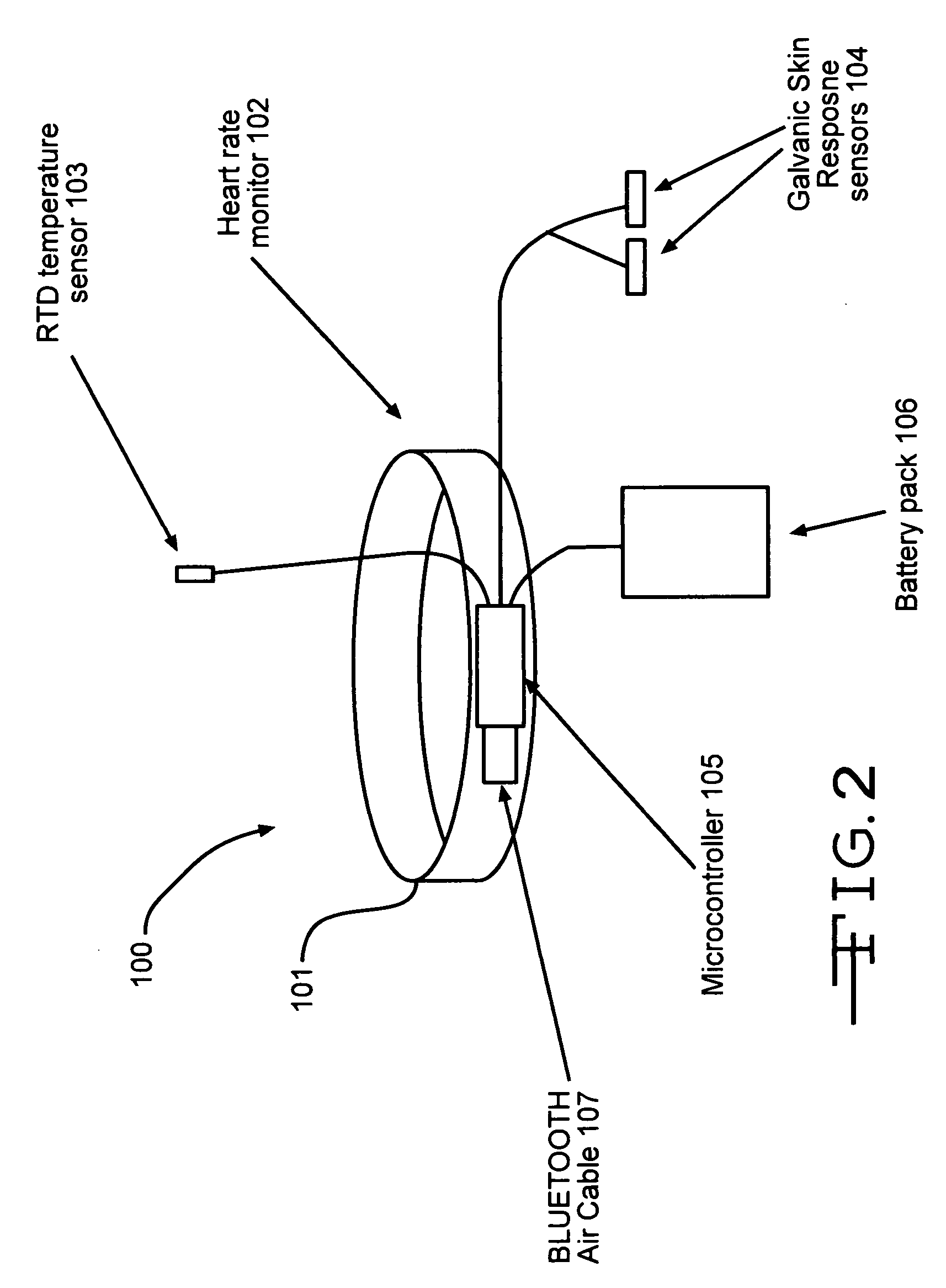Portable autonomous multi-sensory intervention device
a multi-sensory intervention and portable technology, applied in the field of portable automated multi-sensory intervention devices, can solve the problems of affecting further burdening the presently strained healthcare delivery system, and limited efficacy, and achieve the effect of soothing the patient's agitated sta
- Summary
- Abstract
- Description
- Claims
- Application Information
AI Technical Summary
Benefits of technology
Problems solved by technology
Method used
Image
Examples
examples
[0048]A pilot study was performed to test the functionality of PAMID within a laboratory setting with healthy human subjects. As a result of these tests and assessments, the design was modified and the prototype adjusted accordingly. The following areas were tested and modified as needed.
[0049]PAMID Sensing unit: Based on the testing outcomes (technical lab and human subjects) the adequacy of the physiological parameters being monitored in detecting agitation was accessed and changes were made accordingly.
[0050]PAMID Stimulation Unit: Based on the testing outcomes the stimuli being administered triggered by changes in measurements of physiological parameters were accessed. In addition, based on subject feedback, the type and number of stimuli used can be modified.
[0051]PAMID Control System: Testing outcomes with human subjects provided data for modification of the preliminary control scheme. These tests also allowed the investigators to evaluate the sharp change and threshold values...
PUM
 Login to View More
Login to View More Abstract
Description
Claims
Application Information
 Login to View More
Login to View More - R&D
- Intellectual Property
- Life Sciences
- Materials
- Tech Scout
- Unparalleled Data Quality
- Higher Quality Content
- 60% Fewer Hallucinations
Browse by: Latest US Patents, China's latest patents, Technical Efficacy Thesaurus, Application Domain, Technology Topic, Popular Technical Reports.
© 2025 PatSnap. All rights reserved.Legal|Privacy policy|Modern Slavery Act Transparency Statement|Sitemap|About US| Contact US: help@patsnap.com



